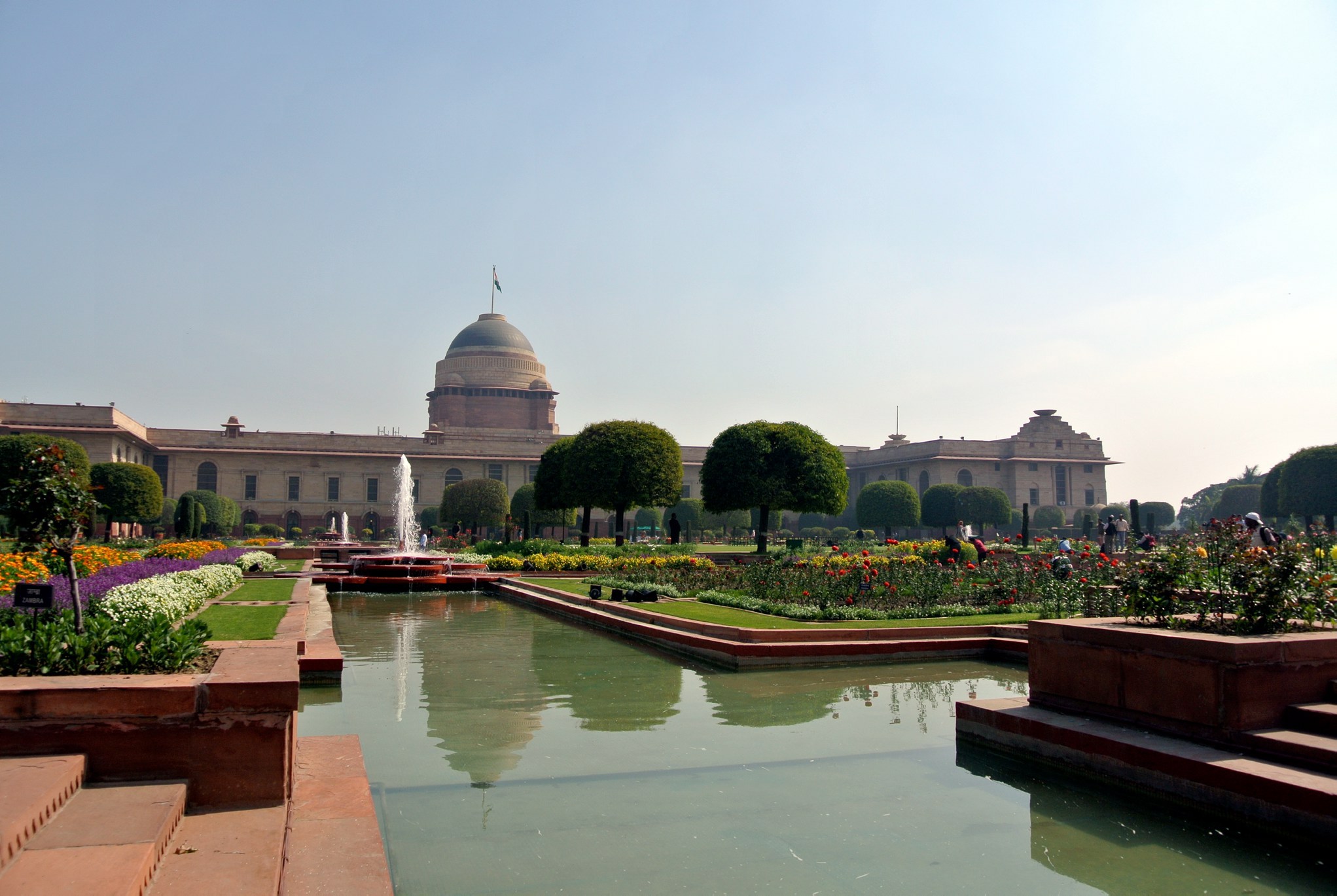ID :
274850
Fri, 02/15/2013 - 03:16
Auther :
Shortlink :
https://www.oananews.org//node/274850
The shortlink copeid
President's Mughal Garden Ready To Lure Visitors

By Saraswathi Muniappan
NEW DELHI (India), Feb 14 (Bernama) -- As spring begins, the Mughal Gardens
(left) of the Rashtrapati Bhavan, India's Presidential Palace, greets visitors with its
riot of colours, fragrances, gushing fountains and a maze of connecting canals.
Touted as one of the most beautiful gardens in the world, the garden that
has its roots in Mughal Islamic architecture is set to welcome visitors once
again.
Located at the heart of the palace's estate, it offers faultless beauty of
a typical Mughal Garden with a British colonial touch.
The garden, spread over 154 hectares was designed by British architect
Edwin Luteyns in 1929 drawing inspiration from the gardens built by legendary
Mughal emperors like Babur, Humayun and Akhbar.
The canals, terraces, geometrical decorum and the water themes are the soul
of the garden, which is open to the public annually between the month of
February and March.
This year, President Pranab Mukherjee would open the annual event known
locally as "Udyanotsav" on Friday Feb 15.
Thereafter, the gardens will remain open for public until March 17, 2013,
from 10 am to 4pm, except on Mondays, reserved for maintenance work.
People from all walks of life are expected to throng the gardens to
experience the majestic display of flowers, trees, and themes in varied colours,
designs and textures.
In 2012, about 650,000 people visited the garden compared with 325,000
visitors in 2006.
DHALIA IN THE LIMELIGHT
This year, the main attraction in Mughal Gardens is the Dahlias in
different colours, which number more than 2,500, the President's Press Secretary
Venu Rajamony said.
A floral wall of Dhalias reaching more than eight feet in height can be
seen encircling the Circular Garden.
"We picked Dhalia as it lasts longer then the rest of the seasonal flowers,
which usually bloom for 15-20 days. Morover, Dhalia will keep on flowering,"
said the Officer on Special Duty (Horticulture), at the Rashtrapati Bhavan,
Nigam Prakash Semwal.
"Different types of floral carpets, the scheme of which are revised almost
weekly can be seen during the entire period when Mughal Garden is open to the
public," Rajamony said at the first-ever media preview on Wednesday.
Furthermore, China Oranges at the Mughal Gardens can be seen in great
numbers for the first time in many years.
The visual appeal of the garden has been remarkably enhanced this year
with its compelling colour scheme, a combination of yellow and white flowers.
ROSES OF MUGHAL GARDENS
Roses are central to the fame of Mughal Gardens and a permanent feature
throughout the year. The garden has more than 120 celebrated varieties of roses.
Their prime bloom is during February-March.
The special roses include Green Rose, Oklahoma (often called as Black
Rose), and Angelique.
There are 40 fragrant varieties including Belami, Blue Moon, Black Lady,
Double Delight, Eiffel Tower, Granada and Jadis.
There are roses named after eminent Indian figures - Mother Teresa, Arjun,
Bhim, Raja Ram Mohan Roy, Jawahar and Dr BP Pal. Roses with the name of
international celebrities include John F. Kennedy, Queen Elizabeth, Abraham
Lincoln.
The Mughal Garden, also encompass Herbal Garden, Bonsai Garden and Musical
Fountains.
The western edge of the manicured garden is just opposite the Southern
Ridge that retains much of its original rocky character and with hard thorn
scrub and tough semi desert flora; it attracts many species of birds, most of
them migratory species.
AT THE MERCY OF THE WEATHER
Nonetheless, the extreme weather condition this year had affected the
quality of the flowers, said Semwal.
"We had to cover some of the flowers when it rained recently," he said,
adding that there were 35 to 40 gardeners maintaining the garden.
Asked on how he ensures that all flowers bloom at the same time, Semwal
said; "Some plants take three months, some earlier. So, we have to start
planting accordingly to ensure all bloom at the same time."
Pointing out at the perennial plant 'cyclamen', which is yet to fully bloom,
he said, they would be in full form on the openning day.
Some flowers are brought in from as far as Holland or as close as Kashmir,
noted Semwal.
"We use only aerated water as sometimes the raw water's foul smell
overwhelms the fragrance of the flowers.
"We have to ensure that there are flowers throughout the days it is open to
the public because if not people might show their displeasure," he said adding
that maintaining the garden in picture perfect condition is a tedious process.
MORE THEN JUST A DISPLAY OF FLOWERS
The riot of colours is definitely a pleasure to the eyes, but the garden
also displays the importance of compassion and co-existence.
In the Spiritual Garden, there are about 40 different plants considered
sacred to different religions that thrive at the same place.
They include Rudraksh, Chandan, Kadamba, Banyan, and the date tree all
having significance to Hinduism and other religions.
It represents a simple message, which is, when plants of different nature
can grow harmoniously at the same place why not the different communities?.
(photoBERNAMA)
-- BERNAMA





